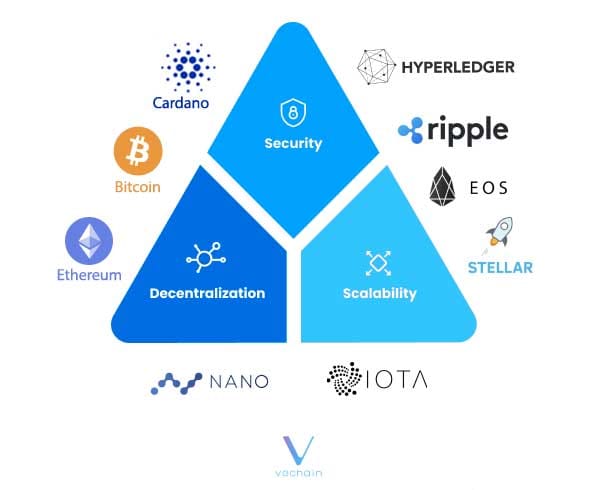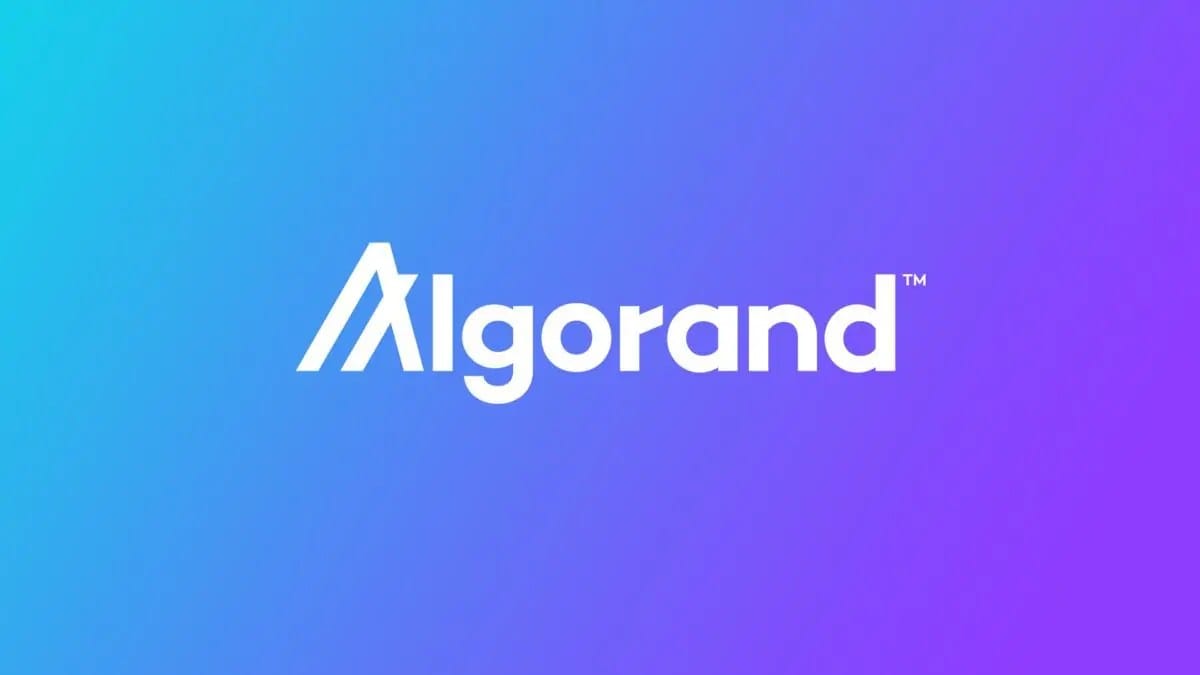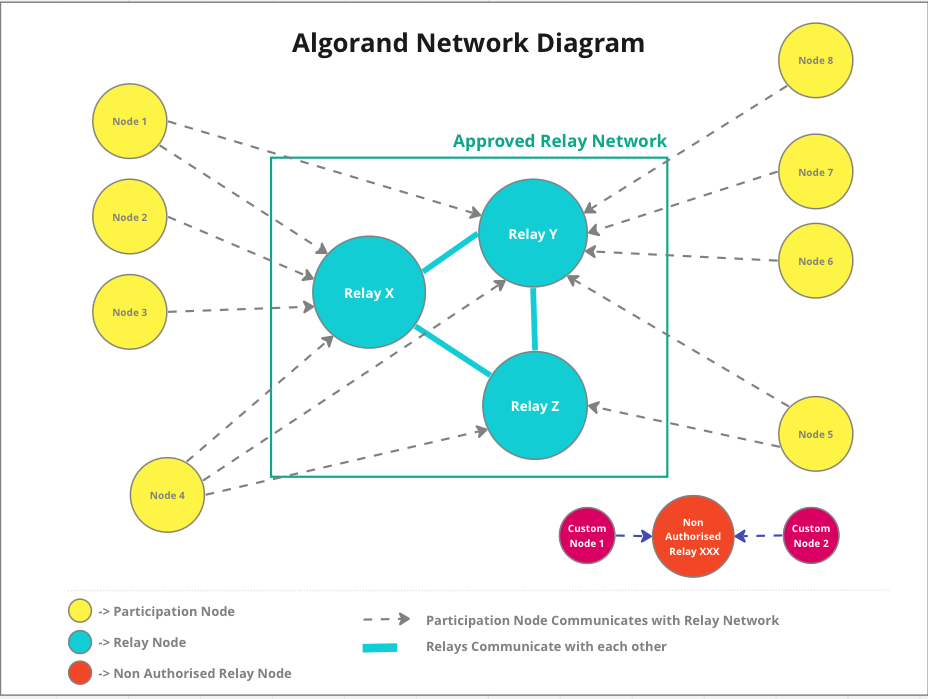Unveiling the Achilles Heel of Blockchain 3.0
Dive into the inaugural 'Blockchain 3.0 Achilles Heel' series by Yari Labs, as we dissect Algorand's innovative features, centralization challenges, and future in decentralization. A compelling analysis for blockchain enthusiasts and tech professionals.

Before we dive in, here's a quick summary for those on the go:
TLDR; In our inaugural 'Blockchain 3.0 Achilles Heel' series, we dissect Algorand's key innovative features and vulnerabilities, highlighting its centralized relay network. We explore potential risks, like censorship and security threats, and look ahead to Algorand's decentralization plans, emphasizing the challenges and hopes for Blockchain 3.0.
Now, let's unpack the details.
1 - Introduction
Welcome to the beginning of our 'Blockchain 3.0 Achilles Heel Series' at Yari Labs. Our first exploration is Algorand, setting the stage for our comprehensive analysis of the top 50 market-cap Blockchain 3.0 projects, including Cardano, Solana, Avalanche, Near, and more. We'll examine each project for its strengths and its 'Achilles' heels,' drawing inspiration from the myth of Achilles, whose near invincibility was marred by a single vulnerability. In the series, we parallel the legendary tale of Achilles with today's blockchain giants' formidable prowess and hidden weaknesses.
The focus of the series centres on the Blockchain Trilemma, a concept coined by Vitalik Buterin. This trilemma underscores the immense challenge of achieving scalability, security, and decentralization all at once, reminiscent of the dilemmas in distributed computing highlighted by the CAP theorem.

For those seeking an in-depth yet accessible exploration of the trilemma and the CAP theorem, James Bachini’s insightful post offers an excellent perspective. As we delve into Algorand's architecture and strategies to address the trilemma, we aim to unravel its capabilities, limitations, and potential future impact, paving the way for a series that promises to unveil the complex layers and potential pitfalls of the most influential blockchain projects in the world today.

2 - Algorand: An Innovative Force in Blockchain
Algorand stands out in the Blockchain 3.0 era, driven by the vision of Turing award-winner Silvio Micali. It's not just another blockchain; it's a trailblazer in scalability and efficiency. Here's a snapshot of its cutting-edge features:
Key Features of Algorand:
-
Scalability and Speed: Algorand boasts up to 10,000 transactions per second, instant block finality, and a reduced block cadence of 2.8 seconds, courtesy of the latest dynamic lambda update.
-
Reliability and Security: Launched in 2019, Algorand maintains a perfect record of zero downtime. Advanced cryptographic methods safeguard against protocol attacks, and the introduction of state proofs for interoperability enables trustless cross-network verification. State proofs use lattice-based cryptography and FALCON signatures, enhancing security and paving the way for post-quantum resilience.
-
Affordability and Sustainability: With transaction costs as low as ~USD 0.0002, it facilitates a wide range of applications, from micro-transactions to larger operations.
-
Revolutionary Programmability and Cryptography: Algorand leads with features like Atomic transaction groups, Algorand Standard Assets (ASAs), and Rekeying, greatly simplifying smart contracts. OPT_INs ensure participants control asset ownership, mitigating legal and compliance risks. Support for native assets at the protocol level, unlike contract-based assets, ensures reliability and deterministic properties, diminishing the need for audits.
-
Cryptographic breakthroughs: Technologies like Fast Byzantine Agreement and Verifiable Random Functions (VRF) not only enhance current security but also establish a foundation for future post-quantum resilience.
Sample Real-World Application: A project we've worked on that is an example of Algorand's capabilities in action is the Dharma Market project, showcasing the seamless integration of ASAs and innovative atomic swaps for efficient and secure trading of NFTs without the need of smart contracts.
Algorand is not just another player; it's a beacon of innovation in the blockchain space, reshaping what was possible before in terms of speed, security, and programmability.
3 - Algorand Network Architecture Overview

Algorand Network: Efficiency Through Specialized Nodes
Algorand’s Blockchain operates as a decentralized network of nodes, each playing a specific role in upholding the integrity and speed of the system. Its Pure Proof of Stake consensus protocol, known for rapid block production every 3.3 seconds, relies on widespread and efficient node communication.
The Village Postal System: Simplifying Algorand's Network
Picture a village representing Algorand's blockchain, where villagers (the nodes) need to share messages (transactions and data). They have two main methods:
- Peer-to-Peer Gossip Protocol: Like villagers spreading news from one to another, this method is straightforward but slow, as messages must pass through many hands.
- Centralized Postal Service (Algorand's Relay Nodes Network): The village sets up a postal service where messages are sent to the post office (relay nodes), which then efficiently delivers them to everyone. This method is quicker and more reliable for widespread message distribution.
Algorand chooses the postal service approach. It's faster than the gossip method, but this centralized system has its own challenges, such as higher operational costs and potential centralization issues.
A great example is the original prototype of Algorand that used a Gossip protocol similar to Bitcoin, as we can see illustrated on this figure from the original white paper:

where each node selected a small random set of peers to gossip messages to, and it produced blocks in about 60 seconds - a stark contrast to the current 3.3 seconds. Such a discrepancy highlights the significant engineering challenge of preserving Algorand's swift block production while transforming the communication framework.
Participation Nodes: Pillars of Consensus
Participation Nodes form the core of Algorand’s Blockchain. These nodes participate directly in the consensus protocol, where a supermajority (more than 77.5% of the stake) must agree on a new block. These nodes uphold Algorand’s security by maintaining their copy of the ledger and validating transactions. They are like the villagers from the analogy responsible for verifying the content of the messages they receive.
- Accessibility: Unlike Relay Nodes, Participation Nodes are designed for accessibility. They are lightweight enough to operate on low-resource devices like Raspberry Pi.
- Distribution: According to latest metrics there are around 1047 Participation Nodes, which contribute to the distributed nature of Algorand’s consensus network.
Relay Nodes: The Fast Track
Relay Nodes, akin to the village post office, function as Algorand’s communication backbone and are critical for efficient data transfer across the network. They ensure high-speed connectivity and minimal latency. However, operating these relay nodes (the postal service) requires substancial resources and incurs high costs, much like maintaining a sophisticated postal system in a village.
Relay nodes Hardware:
- High Performance: To handle the network’s demands, Relay Nodes Hardware require substantial resources, including:
- 16 vCPUs , 32 GB RAM, 3 TB NVMe SSD , 1 Gbps connection
- 30 TB/month network data egress
However, from March onwards, Algorand will support light relay nodes with just 256GB NVMe SSD and making operation feasible on less bulky hardware.
-
High Operational Cost: The cost to run a Relay Node on cloud services can range from USD 600 to USD 1,200 monthly, varying by region and provider.
-
Star Topology: As depicted in Diagram 1, Algorand employs a star topology where each Participation Node connects to one or several Relay Nodes. Relay Nodes also interconnect, forming a robust mesh for data routing.
For more detailed technical information on these types of nodes, see the Algorand developer documentation.
Algorand network reliance on relay nodes, like the village with a central postal system is more efficient and fast than gossiping, but comes with its own set of challenges, such as high operational costs and centralization concerns that we'll explore next.
Understanding the village analogy helps us appreciate the complexities and trade-offs in Algorand's network architecture.
4 - The Incentive Challenge for Participation Nodes
A key concern in discussing Algorand's network is the lack of direct financial incentives for participation nodes, crucial for network security and consensus. This design choice depends on participants' goodwill and altruism.
The authors of Algorand's foundational paper acknowledge this in the "Future Work" section, suggesting a need for incentive mechanisms to motivate user participation. The absence of rewards brings into question the network's long-term sustainability and security, as it risks inconsistent participation and engagement. Unlike other blockchain systems where contributions are monetarily rewarded, Algorand's dependence on volunteer participation could potentially weaken network robustness and security.
In response to these concerns, Algorand's 2024 roadmap, unveiled today, introduces a comprehensive plan to implement consensus incentivization. This significant shift, detailed in a white paper and further explained by CTO John Woods, proposes using transaction fees and Algorand Foundation grants as incentives. While this strategy represents a positive step towards addressing the incentivization issue, its long-term economic viability remains to be determined, particularly given its dependence on transaction fees and grants. However, it undoubtedly marks a critical step towards enhancing the network's resilience and participant engagement.
5 - Algorand’s Centralised Point of Failure: A Deep Dive into Relay Nodes

5.1 - Introduction to Concerns and Investigative Methodology
Algorand's innovative network architecture faces scrutiny, particularly regarding its relay nodes. Critics, such as Justin Bons, have raised concerns about centralization and scalable security. Triggered by this criticism, we embarked on a detailed investigation.
1/25) Algorand's technology is cutting edge
— Justin Bons (@Justin_Bons) October 21, 2022
Highly scalable without sharding or L2s, boasting a TPS of up to 6k with 4-second finalization times & on-chain governance!
Unfortunately, ALGO is also centralized & permissioned:
Permissioned gatekeepers can censor any TX on a whim!
This was the tweet that triggered our investigation
Our investigation into Algorand's relay nodes began with a detailed audit of the client’s source code, leading us to a critical aspect of the network’s connectivity. We discovered that participation nodes access the relay node list through a publicly available DNS query, controlled by algorand.network domain administrators. This accessibility is key, as it demonstrates how the relay network remains permissioned under their control.
To verify this, one can replicate the DNS query with the following command in a terminal environment:
dig @8.8.8.8 +short SRV _algobootstrap._tcp.mainnet.algorand.network
This command retrieves the full roster of Algorand’s mainnet relay nodes, effectively unveiling the network's backbone. Further, we developed a script for a comprehensive analysis, conducting reverse DNS lookups and various diagnostics to assess node availability, geographical distribution, and other metrics. The findings are compiled in this spreadsheet.
5.2 - Investigation Highlights
Our analysis identified 106 relay node addresses, with 103 actively operational marking a decrease from the 120 previously reported by the Algorand Foundation in Q2 2022. We noted a significant geographical imbalance:
- North America: 39 nodes
- Europe: 37 nodes
- Asia: 22 nodes
- South America: 3 nodes
- Australia: 2 nodes
- Africa: 3 nodes
This suggests a network optimized for North American and European performance, potentially leading to service gaps elsewhere. The United States alone hosts 31 nodes, equaling the total of the next six countries combined. Further inspection revealed that most nodes are managed by cloud services or entities likely linked to the Algorand Foundation or its affiliates. Universities operate 8 nodes and individual entities appear to host 5 nodes.
5.3 - Why a tightly controlled relay network ?
To understand Algorand's choice for a permissioned and tightly controlled relay network, consider the village postal analogy again:
-
Variable Efficiency: Allowing anyone to join as a carrier could lead to inconsistent reliability and speed in delivery. Some might use bicycles, others might walk, leading to inconsistent delivery times. Similarly, in a blockchain context, a network with varied and unvetted participants might face fluctuating performance and efficiency.
-
Security Risks: With no vetting, there's a higher chance of mail being tampered with or not delivered, akin to network attacks or failures in a blockchain context. A group of carriers big enough could sabotage the system.
-
Management Challenges: Coordinating an undefined group of volunteers can be much more complex than managing a trained, known workforce.For Algorand, this translates to the difficulty of maintaining network coherence and security in a fully decentralised setting.
This analogy helps elucidate Algorand’s rationale for maintaining control over its relay network, prioritising consistent performance, security, and manageable coordination.
5.4 - Analysing the Implications of Centralisation:
Our findings highlight centralisation within Algorand’s network, raising questions about network autonomy and vulnerability to censorship and cyber-attacks.
- Centralised Vulnerabilities: The Algorand's oversight of most relay nodes indicates a move away from decentralisation, potentially affecting network autonomy. The reliance on community goodwill, absent financial incentives for node operation, risks further centralisation and inconsistency.
- Operational Challenges: The extensive resource requirements to run a relay node create a high entry barrier, centralising control among a select few and challenging the network's decentralised ethos.
5.5 Risks and Sustainability
- Single Point of Failure: The centralized control of relay nodes poses a risk of network paralysis if critical infrastructure is compromised (for example the DNS SRV records being compromised or removed).
- Censorship Resistance: The existing control structure could hypothetically lead to selective transaction censorship, indicating a need for enhanced resistance measures.
- Security Vulnerabilities: Concentrated relay nodes present prime targets for DDoS attacks and other security threats.
Sustainability and Equity: The high operational costs and declining node numbers raise sustainability concerns. Additionally, geographic concentration might result in performance imbalances globally.
Concluding Thoughts: Algorand's network, a blend of innovation and potential centralisation, faces crucial challenges. Recognising and addressing these vulnerabilities is essential for Algorand to evolve into a truly decentralized and resilient blockchain ecosystem.
6 - Algorand’s Future: Navigating Toward Decentralization
Algorand’s roadmap for 2024 marks a significant shift towards greater decentralisation and sustainability, addressing the current challenges in its network architecture.
Key developments include:
-
Consensus Incentives: Mid-2024 plans involve introducing rewards for participation nodes, aiming for a more robust and equitable network.
-
Gossip Protocol Implementation: By year-end, Algorand aims to implement a libp2p-based gossip protocol, enhancing decentralization and potentially reducing operational costs associated with the current relay node system, making the future of the network more sustainable.
-
Light Relay Nodes: Light Relay Nodes: The planned introduction of Light Relay Nodes represents a strategic advancement towards sustainability. These nodes, operating without full archival requirements, will reduce hardware and operational costs.
However, this transition to a Peer-to-Peer(P2P) system isn't without its challenges. Shifting from the current relay network to a P2P communication model involves significant technical complexities, particularly maintaining Algorand's high performance. Comparing historical data from Algorand's initial prototype, which used a Bitcoin-like P2P gossip protocol, reveals stark differences in block production times, highlighting the substantial engineering efforts required for this transformation.
Algorand's journey towards a more decentralised future is filled with promise but requires meticulous engineering to balance technical advancements with network efficiency.
Our "Blockchain 3.0 Achilles Heel" series will continue to chronicle these transformative developments, offering a lens through which we can view the unfolding future of blockchain technology.
Interested in following these developments? Subscribe to our series to get in-depth analysis and insights on Algorand and other leading blockchain projects.
